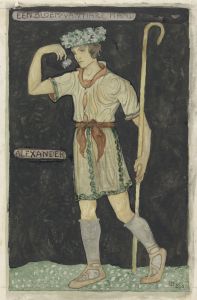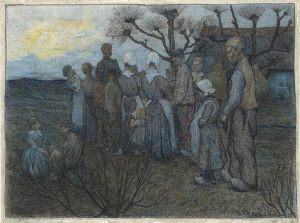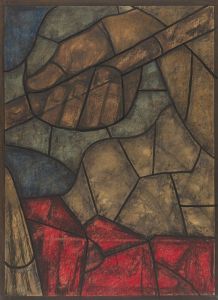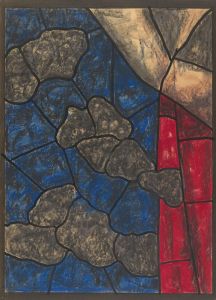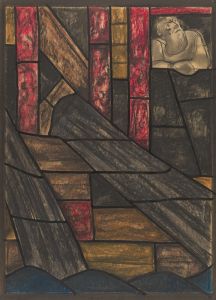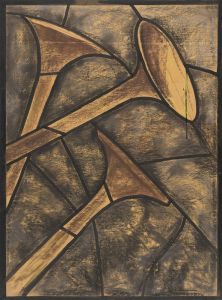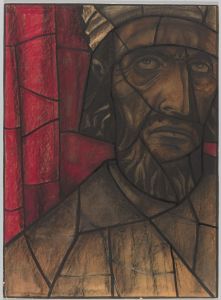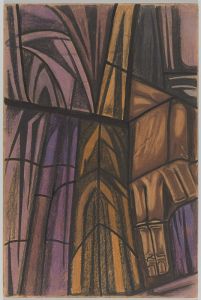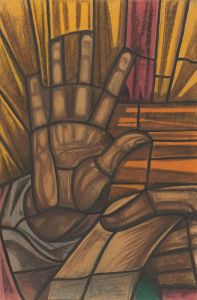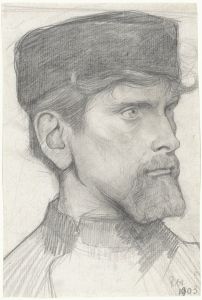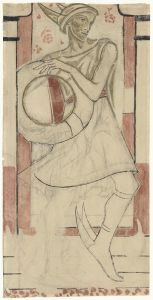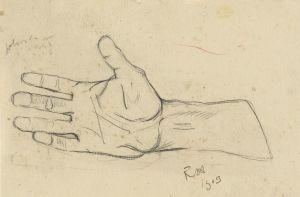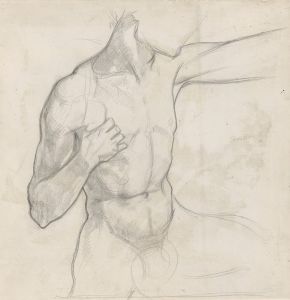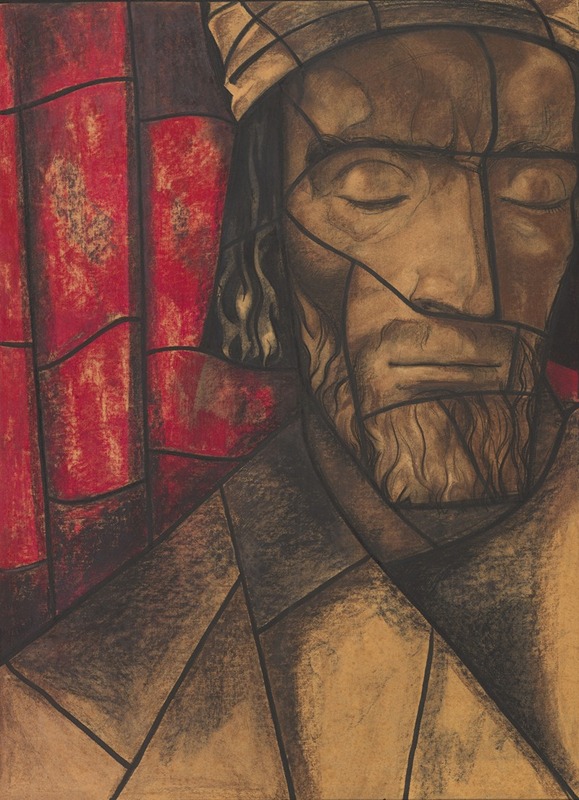
Ontwerp voor raam in het Zuidertransept van de Dom te Utrecht 5
A hand-painted replica of Richard Nicolaüs Roland Holst’s masterpiece Ontwerp voor raam in het Zuidertransept van de Dom te Utrecht 5, meticulously crafted by professional artists to capture the true essence of the original. Each piece is created with museum-quality canvas and rare mineral pigments, carefully painted by experienced artists with delicate brushstrokes and rich, layered colors to perfectly recreate the texture of the original artwork. Unlike machine-printed reproductions, this hand-painted version brings the painting to life, infused with the artist’s emotions and skill in every stroke. Whether for personal collection or home decoration, it instantly elevates the artistic atmosphere of any space.
Richard Nicolaüs Roland Holst was a prominent Dutch artist known for his contributions to the Arts and Crafts movement in the Netherlands. Born in 1868, he was a versatile artist whose work spanned various mediums, including painting, drawing, and stained glass design. One of his notable works is the design for a stained glass window titled "Ontwerp voor raam in het Zuidertransept van de Dom te Utrecht 5," which translates to "Design for Window in the South Transept of the Dom Church in Utrecht 5."
The Dom Church, or St. Martin's Cathedral, in Utrecht is a significant historical and architectural landmark in the Netherlands. It has been a central place of worship and a symbol of the city's rich history. The church's architecture is primarily Gothic, and it has undergone various renovations and restorations over the centuries. Stained glass windows have been an integral part of its aesthetic and spiritual ambiance, serving both decorative and didactic purposes.
Roland Holst's design for the stained glass window in the south transept of the Dom Church is a testament to his skill and artistic vision. His work in stained glass is characterized by a harmonious blend of color, form, and narrative content, often reflecting themes of spirituality and humanism. While specific details about this particular design are limited, it is consistent with his broader oeuvre, which frequently incorporated allegorical and symbolic elements.
Roland Holst was deeply influenced by the Arts and Crafts movement, which emphasized traditional craftsmanship and the intrinsic beauty of materials. This movement sought to counteract the industrialization of art and design, advocating for a return to handcraftsmanship and the integration of art into everyday life. In his stained glass designs, Roland Holst often employed vibrant colors and intricate patterns, aiming to create works that were not only visually striking but also spiritually uplifting.
Throughout his career, Roland Holst was involved in various artistic and cultural initiatives. He was a member of the "Vereeniging tot Bevordering der Grafische Kunst" (Association for the Promotion of Graphic Art) and played a significant role in the Dutch art scene of the late 19th and early 20th centuries. His contributions to stained glass design were part of a broader effort to revitalize this art form in the Netherlands, aligning with the goals of the Arts and Crafts movement to preserve and promote traditional artistic techniques.
The stained glass windows of the Dom Church, including those designed by Roland Holst, are an important part of the church's heritage. They contribute to the overall atmosphere of the sacred space, enhancing the interplay of light and color within the church interior. These windows not only serve as decorative elements but also as storytelling devices, conveying religious and moral narratives to the congregation.
In summary, Richard Nicolaüs Roland Holst's "Ontwerp voor raam in het Zuidertransept van de Dom te Utrecht 5" is a reflection of his artistic philosophy and his commitment to the principles of the Arts and Crafts movement. While specific details about this particular design may be scarce, it remains an integral part of his legacy as a master of stained glass art in the Netherlands. His work continues to be appreciated for its aesthetic beauty and its contribution to the cultural and artistic heritage of the Dom Church in Utrecht.





